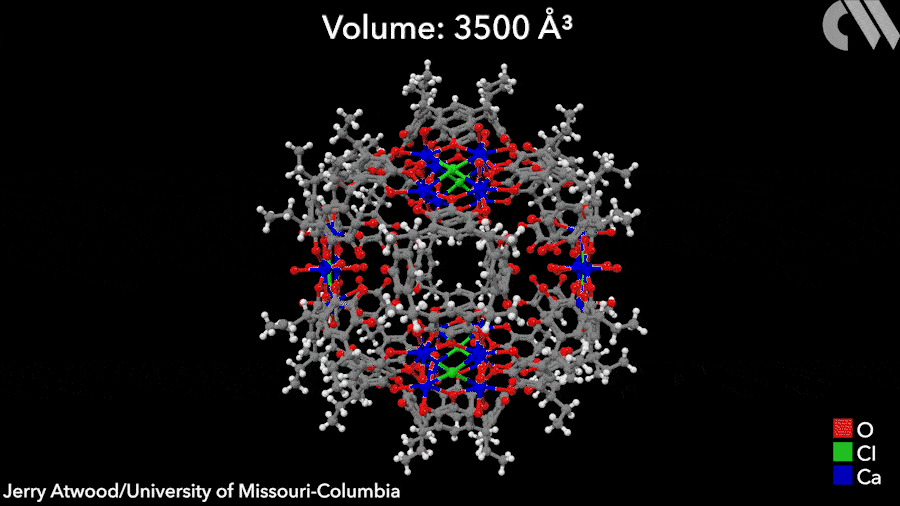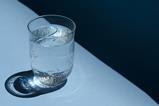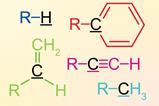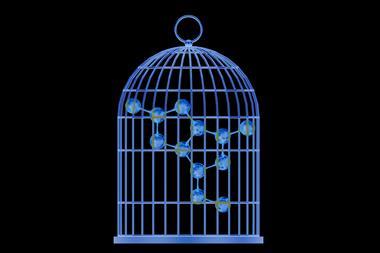Researchers in the US have synthesised and crystallised a metal–organic capsule with an internal volume of 3500Å3.1
C-alkylpyrogallol[4]arenes have previously been assembled into dimeric and hexameric capsules with a range of metal ions both in the solid state and in solution. Ten years ago, researchers reported solution-phase evidence of a dodecameric capsule assembled with holmium, but they were unable to obtain crystals for diffraction studies.2

Now, a team of researchers, led by Gary Baker and Jerry Atwood at the University of Missouri, has assembled a dodecameric capsule by sonicating and then heating a mixture of C-ethylpyrogallol[4]arene and anhydrous calcium chloride in a 1:1 ratio of DMF and methanol. Notably, the capsule crystallised from the reaction mixture and the researchers obtained single crystals of the capsule for diffraction studies. The crystal structure shows that 12 C-ethylpyrogallol[4]arene units form the edges of a cubic framework. Furthermore, the faces of the cube are sealed by cross-shaped polyatomic cations composed of four calcium cations surrounding a central chloride anion to form a well-defined cavity of 3500Å3.
The team also studied the guest-binding behaviour of the capsule. They observed that the capsule bound two fluorescent probes, Nile red and pyranine, when included in the assembly mixture. Immersing the capsules in fresh solvent prompted them to release the probes. Now the team is turning its attention to other guests, such as pharmaceuticals and antioxidants, for controlled molecular delivery.
References
1 K Sikligar et al, Chem. Sci., 2023, DOI: 10.1039/d3sc01629c
2 H Kumari et al, Chem. Comm., 2014, 50, 109 (DOI: 10.1039/c3cc47029f)

















No comments yet